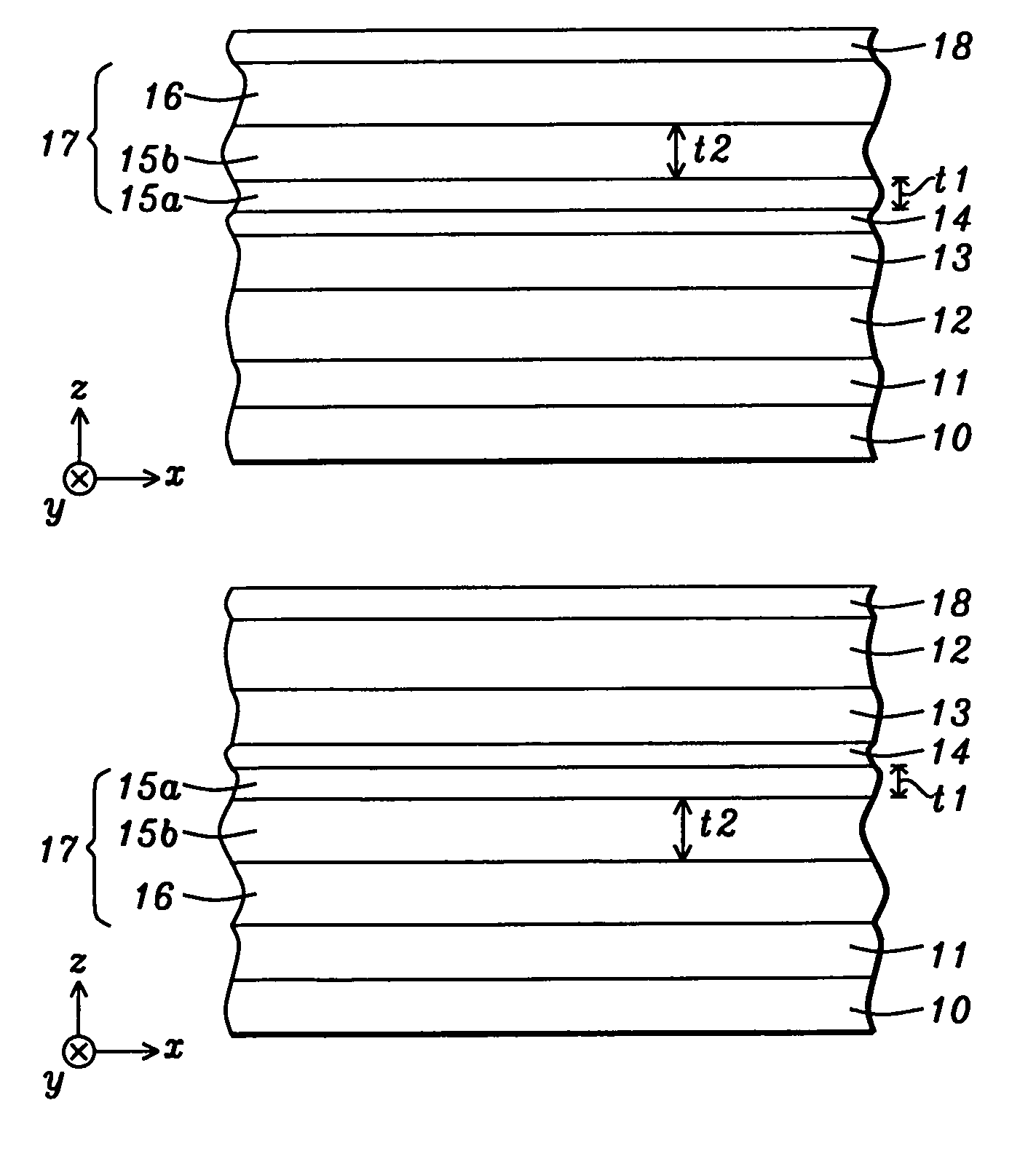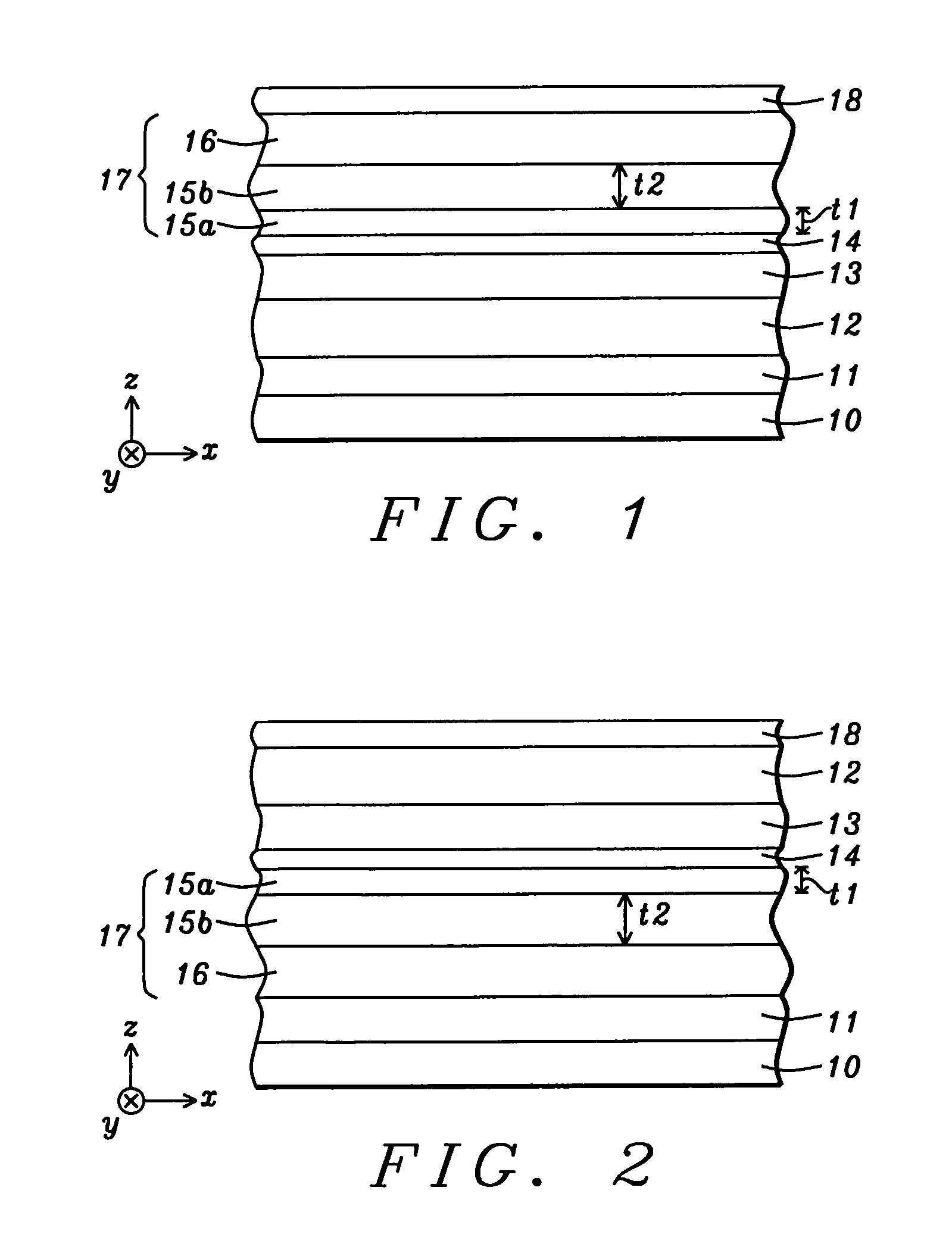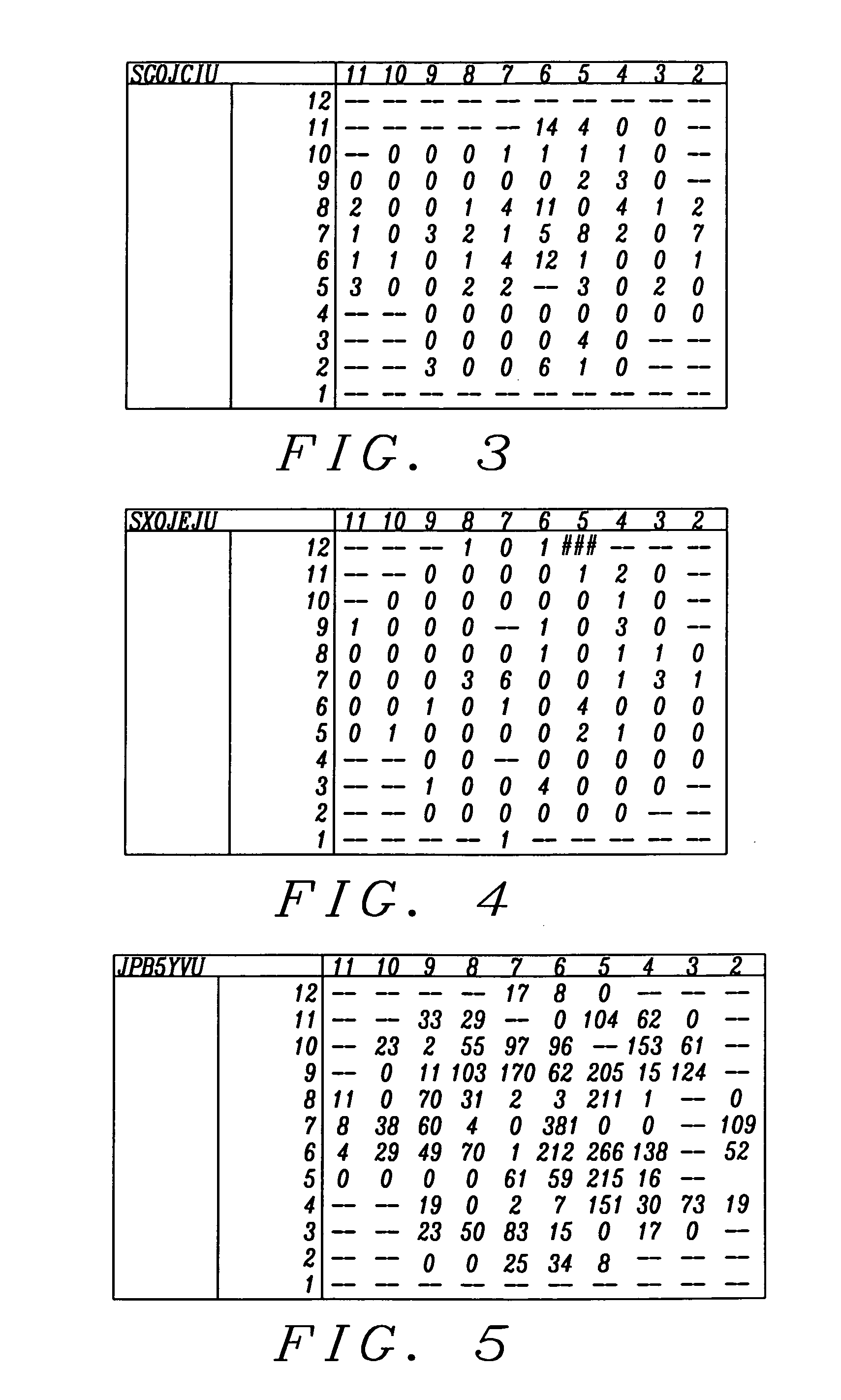Composite free layer within magnetic tunnel junction for MRAM applications
a technology of magnetic tunnel junction and free layer, applied in the direction of substrate/intermediate layer, magnetic body, instruments, etc., can solve the problems of poor writing margin, inability to directly apply structure in mram, degradation in one or more other parameters, etc., and achieve the effect of improving mram performan
- Summary
- Abstract
- Description
- Claims
- Application Information
AI Technical Summary
Benefits of technology
Problems solved by technology
Method used
Image
Examples
first embodiment
[0026]Referring to FIG. 1, a MTJ structure is illustrated according to the present invention. The substrate 10 may be a bottom conductor layer, for example, having a thickness in the z-axis direction and with a top surface in the x,y plane. A MTJ stack of layers is now formed on the substrate 10. It should be understood that all layers in the MTJ stack may be formed in the same process tool such as an Anelva C-7100 thin film sputtering system or the like which typically includes three physical vapor deposition (PVD) chambers each having 5 targets, an oxidation chamber, and a sputter etching chamber. At least one of the PVD chambers is capable of co-sputtering. Typically, the sputter deposition process involves an argon sputter gas and the targets are made of metal or alloys to be deposited on a substrate. All MTJ layers may be formed after a single pump down of the sputter system to enhance throughput.
[0027]In the exemplary embodiment depicting a bottom spin valve structure, the MTJ...
embodiment 1
[0044]In all examples except reference 4, a NiRFeSHfT layer where R=78, S=10, and T=12 was deposited by co-sputtering a Ni88Fe12 target and a Hf target in an Anelva 7100 sputter deposition system. The preferred deposition method comprises applying a forward power of 100 Watts (W) to 300 W to the Hf target and a forward power of 200 W to 600 W to the NiFe target to deposit a NiFeHf layer at a pressure less than about 0.3 mTorr and at an ambient temperature. As indicated in Table 1, the Embodiment 1 sample has a higher MR ratio and lower Hc and lower Hk than for the six reference samples which demonstrates that all three of the aforementioned properties can be optimized simultaneously by implementing a composite free layer according to the present invention. Note that a CoFeB free layer (Ref. 4) and a CoFe / NiFeHf composite free layer where a middle Fe layer has been omitted and CoFe thickness increased (Ref. 3) both afford significantly higher Hc and Hk that will degrade switching per...
PUM
| Property | Measurement | Unit |
|---|---|---|
| thickness | aaaaa | aaaaa |
| thickness | aaaaa | aaaaa |
| thickness | aaaaa | aaaaa |
Abstract
Description
Claims
Application Information
 Login to View More
Login to View More - R&D
- Intellectual Property
- Life Sciences
- Materials
- Tech Scout
- Unparalleled Data Quality
- Higher Quality Content
- 60% Fewer Hallucinations
Browse by: Latest US Patents, China's latest patents, Technical Efficacy Thesaurus, Application Domain, Technology Topic, Popular Technical Reports.
© 2025 PatSnap. All rights reserved.Legal|Privacy policy|Modern Slavery Act Transparency Statement|Sitemap|About US| Contact US: help@patsnap.com



